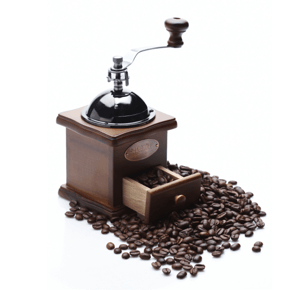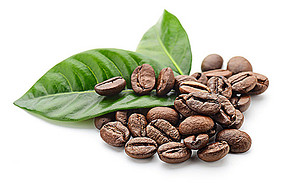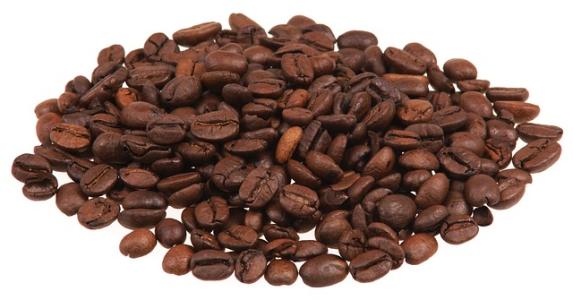Introduction to Don Juan Coffee Garden in Costa Rica
Follow the caf é (Wechat official account vdailycom) and found that Beautiful Cafe opened a small shop of its own.
Costa Rica
Land: 51100 square kilometers, a little smaller than Ningxia
Population: total population (4586353) estimated in 2011
Official language: Spanish
Ethnic group: White, Indo-European people
Political system: presidential system
Legal system: continental system
National flower: Cartland (one of the world-famous orchids)
International acronym: CR
International area code: + 506
Topography: the coast is surrounded by plains, while the middle is cut off by rugged mountains.
Climate: it belongs to the tropics and subtropics, and some of them are new tropics.
Culture: a long time ago, there were civilizations that you could only see in books: Andean civilization, Mayan civilization, Central American civilization.
Population: mixed-race and purebred Europeans account for 94% of the population, the main immigrants are Spaniards, and there are many Germans, Poles, Italians and Jews, and there are only a few Indians who survived the western invasion. Black descendants who emigrated from Jamaica in the 19th century accounted for 3% of the population; the other 1% were Chinese.

Other:
1. The United States is responsible for the security of the first country to abolish its army.
It took months to get a phone number 2.2009 years ago.
3.40% of the territory is covered with virgin forests.
4. Subverting the concept of the four seasons of the year, only the dry season (late December to April) and the rainy season (April to December) are hot all the year round. Personally experience the discordant heavy rain, especially like to start at around 4 o'clock in the afternoon, it is useless to hold an umbrella.
5. People here enjoy the sun so much that it will be a 100% turn-back thing to use an umbrella to shade the sun in the street.
6. The vast majority of people here can sing and dance, lively, warm, open and easygoing.
7. The city is full of small bungalows, but there are almost no tall buildings.
8. There are seven provinces in total. San Jose is the capital.
9. Establish diplomatic relations with China in 2007.
10. Economic development mainly depends on tourism and agriculture (coffee, fruit).
11. There are many kinds of fruits here, and they are very delicious. Fried big bananas like bananas are their characteristics. It is said that this kind of green bananas can not be eaten directly. Black beans and rice are also their characteristics. The food here is varied and integrated with all kinds of cultures.
Don Juan Coffee Garden
Don juan Coffee Garden is located in Cloud Forest (Monteverde). Exploring coffee is our first project in the cloud rainforest. In this article, I sorted out what I learned during the coffee trip, and after reading it, you will have a new understanding of coffee, at least you will know not to waste coffee, because it is hard to come by.
"A perfect cup of coffee, dark as the devil, hot as hell, pure as an angel, sweet as love."
-- Talleyrand, French diplomat
1. If a good coffee tree wants to grow, it must be planted in terms of climate, topography and soil.
Climate: year-round direct sunlight, abundant heat, sufficient Rain Water.
The "coffee belt" is located in the tropics between the Tropic of Cancer and the Tropic of Cancer. As a tropical cash crop, coffee trees grow in coffee belts with excellent climatic conditions, where the sun shines all the year round, has abundant calories and sufficient Rain Water, and the annual average temperature is above 20 degrees Celsius. However, not all kinds of coffee trees can bear the high temperature, humidity and strong light. For example, coffee trees planted in Arabica cannot stand it. They are often planted at higher elevations. If the light is too strong, they have to be shaded, hence the name "Rainforest Coffee" and "Shade planting Coffee". In May this year, I volunteered in Costa Rica. During my spare time, I went to the Costa Rican coffee garden to experience it. The coffee here is rainforest coffee.
Topography: coffee trees are not easy to grow on the cold current passage, open to the south, and the slopes without frost and calm wind in winter are undoubtedly the first choice. But the negative side can sometimes become a good choice because of the slower growth period. At the same time, the slope is too bad for planting, harvesting, soil fertilizer conservation and so on. For example, coffee trees in Yunnan emphasize that the slope is less than 25 degrees.
Soil: coffee is a shallow root plant, the soil is rich in organic matter (good fertilizer conservation ability), abundant water vapor (unobstructed drainage), deep soil (usually more than 1 meter), weak acidity and so on are all suitable conditions for coffee growth. Places like Guatemala, Brazil, Colombia, Hawaii, the Blue Mountains of Jamaica, Java of Indonesia, and Yunnan of China can become excellent coffee producing areas, all related to the possession of such volcanic or forest soils.
two。 The top ten coffee producing countries in the world
Nearly 70 countries around the world produce and export coffee beans, but the output and quality are uneven. Here is the top 10 of the 2010 Global Coffee production released by ICO: Brazil, Vietnam, Colombia, Indonesia, Ethiopia (country of origin), India, Mexico, Guatemala, Honduras and Peru. Six of these countries are occupied by countries in South and Central America, which provides 70 per cent of the world's coffee supply.
3. The three original species of coffee:
Arabica Coffee (coffea Arabica)
Robuska Coffee (coffea Robusta)
Liberian Coffee (coffea Liberica)
4. Coffee varieties:
Of course, there are many varieties of coffee on the market, and in essence, the offspring of various proportions of these three original species have relative genetic stability and biological consistency.
Bourbon and Typica are the oldest Arabica coffee varieties that exist at present.
"New World" (MundoNovo) is a hybrid of bourbon and Tibica. It has good flavor, high yield, tall beans and strong resistance to diseases and insect pests.
Geisha Rose Summer is a wonderful flower in the genetic treasure house of Ethiopian coffee varieties in the hometown of coffee. The coffee beans produced by this coffee tree are slender and glossy, and the beans produced at high altitudes are the most valuable. The coffee has a charming aroma, pure taste, lively acidity and good sweetness. There have been a small number of plants in Colombia, Panama, Costa Rica and Guatemala, but the output is very low and the input-output rate is not high.
There are too many varieties, such as Pache, BlueMountain, Pacamara. Catimor.
5. Country of origin of coffee:
Ethiopia
6. Coffee cultivation:
Coffee is monoecious, self-painted pollination plant, 5-petal white coffee flowers, fragrant and fragrant. Planting is usually a five-year round.
7. Planting process:
The coffee seeds are soaked in warm water for 24 hours and germinate 40-60 days after the seeds are planted. When the seedlings grow 4-5 pairs of true leaves, they are planted in the nursery. Plant spacing varies with different varieties, temporary shading trees and permanent shading trees are also necessary, temporary shading such as peanuts, permanent shading such as albizzia, etc.
Coffee trees can not blossom and bear fruit until 3 years after seedling growth, and the high yield period is only 5-7 years after fruiting. At the end of 20 years or so of economic life, coffee trees will gradually grow old, and treatments such as cutting poles are needed to welcome new life.
Each clump of white flowers blooms with more than a dozen branches and at least a few coffee fruits, which are pulpy berries. As they mature, the exocarp gradually changes from green to red or purplish red (in a few cases yellow). This maturity takes 8-10 months. The coffee fruit on the same coffee tree does not ripen at the same time, and it varies greatly at different elevations.
8. Harvest coffee
The harvested coffee fruits are divided into manual picking and mechanical picking, which are harvested in November, December and January every year. Manual picking is not only a high cost, but also a very difficult process. So coffee gardens in Costa Rica are full of illegal workers from Panama during the coffee harvest season. According to the person introduced, skilled workers pick up to 10 baskets of red fruit a day, all of which cost $4 a basket. A basket should be one kilogram. And green fruit costs two dollars a basket.
The coffee made from a mixture of red and green fruits is shoddy. As far as I know, a skilled coffee harvester in China has been working continuously for a week. Only after all the fruits of labor have been initially processed can the raw coffee beans be filled with a standard sack (60-70 kg). I see the account calculated by an expert. According to the 2012 market, the labor cost of picking 1 kilogram of fresh fruit is about 1 yuan. For coffee plantations, labor costs during the harvest period may account for half of the global total cost.
Mechanical picking is used in plain areas, but not in alpine areas.
9. Roughing:
In order to ensure quality and avoid secondary pollution, fresh fruit picked should be peeled and other processing procedures should be completed as far as possible on the same day, and the skin and seeds should be separated. The primary processing is divided into drying method and washing method. The comprehensive cost of washing is high, but the taste of the coffee is more supple and meticulous, so the selling price will be higher. (friends who are interested in the specific processing methods can inquire by themselves.) After a series of processing, raw coffee beans are produced. But for merchants, parchment beans are easier to store.
10. Coffee making:
Coffee production will also be a major factor affecting the quality of coffee. The roasting time of raw coffee beans determines the taste of coffee, and the caffeine content of deep-roasted coffee beans is less than that of light roasted beans. The content of caffeine is proportional to the extraction time; caffeine is water-soluble.
Important Notice :
前街咖啡 FrontStreet Coffee has moved to new addredd:
FrontStreet Coffee Address: 315,Donghua East Road,GuangZhou
Tel:020 38364473
- Prev

Brief introduction of Tarazhu Costa Rican Coffee
Following Cafe (official Wechat account vdailycom) found that Costa Rica has a small shop of its own, bordering the Caribbean Sea on the east and the Pacific Ocean on the west, as the country's name means in Spanish: fertile shores. Located in the south of SanJos, the capital of Tarasu, Costa Rica is one of the most valued coffee growers in the country. Tarasu (Tarrazu)
- Next

Introduction to Guatemala Agua Dulce Coffee
Pay close attention to coffee comment (Weixin Official Accounts vdailycom ) and find that Meimei Cafe has opened its own small shop in Dulce Sea area of Agua Volcano District on Antigua Island of Guatemala. 100% Arabica coffee beans are produced in this area. Its branch varieties are mainly Bourbon, Tiepika, Cadua and Cadura. There are also a small number of yellow Bourbon, Guixia and Pakamara varieties. Antigua Island is coffee.
Related
- Detailed explanation of Jadeite planting Land in Panamanian Jadeite Manor introduction to the grading system of Jadeite competitive bidding, Red bid, Green bid and Rose Summer
- Story of Coffee planting in Brenka region of Costa Rica Stonehenge Manor anaerobic heavy honey treatment of flavor mouth
- What's on the barrel of Blue Mountain Coffee beans?
- Can American coffee also pull flowers? How to use hot American style to pull out a good-looking pattern?
- Can you make a cold extract with coffee beans? What is the right proportion for cold-extracted coffee formula?
- Indonesian PWN Gold Mandrine Coffee Origin Features Flavor How to Chong? Mandolin coffee is American.
- A brief introduction to the flavor characteristics of Brazilian yellow bourbon coffee beans
- What is the effect of different water quality on the flavor of cold-extracted coffee? What kind of water is best for brewing coffee?
- Why do you think of Rose Summer whenever you mention Panamanian coffee?
- Introduction to the characteristics of authentic blue mountain coffee bean producing areas? What is the CIB Coffee Authority in Jamaica?

